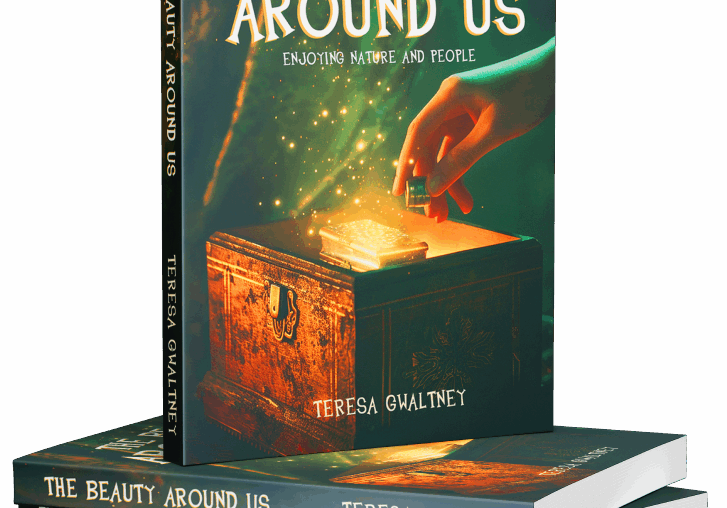The best picture books occupy a unique position in literature. They provide a combination of visual beauty and storytelling that appeals to readers of every age. Moreover, they fill the gap between words and pictures, providing an engaging experience. Among them are picture books on nature. They also link readers with nature in a very special way. Through colorful pictures and interesting stories, they generate respect and wonder. These books create a sense of wonder about our environment. This blog explores the finest picture books that celebrate nature. We’ll see how they enrich our understanding of the environment and nurture a love for its beauty.
The Power of the Best Picture Books
Picture books are more than illustrated stories. They are doorways to fantasy and imagination. Picture books use the combination of words and pictures to express feelings and concepts in a meaningful way. For children readers, picture books present such difficult topics as friendship and self-discovery in an interesting manner. The best picture books also assist children in the development of critical thinking and emotional intelligence. Adults often find it nostalgic to read picture books and recall the simple beauty of childhood literature. In addition, they prompt us to stop and rediscover our sense of wonder. Picture books also introduce the reader to new worlds and encourage respect for storytelling and art.
Themes Explored in Picture Books About Nature
Nature picture books examine myriad themes that intrigue readers and move them closer to the world. They illustrate the seasons changing, how life cycles are revealed. Readers observe trees flowering in spring and animals preparing for winter. These illustrations elicit a greater appreciation for time and renewal in nature. Most books are on the interactions between plants, animals, and the environment. This also offers educational perspectives on ecosystems and the balance of life to keep it going.
Every aspect of nature, from small insects to large trees, is essential to harmony and diversity. Exploration and curiosity are major themes in these tales. They invite readers of any age to gaze at the world in wonder. Whether one observes a butterfly’s wings, a flowing river, or a mountain, these books invite us to examine closely and ask questions.
Furthermore, the majority of picture books prioritize conservation, sustainability, and respect for the earth. They also invite young readers to take care of the planet by preserving habitats and cutting down on waste. Through tales and beautiful pictures, these books foster awe and sympathy. They bring nature near and close, creating emotional ties that encourage good deeds. Finally, picture books about nature contribute to the inculcation of love and respect for our world and to the creation of environmentally responsible citizens who cherish biodiversity.
What Makes a Great Picture Book About Nature
An excellent nature picture book is a work of art. It has more than lovely images and simple facts. It combines science, art, and wonderful writing. These books inspire awe and promote knowledge. They make young readers value nature. They reveal far-off ecosystems as well as nature in your own backyard. Let’s discuss what makes an outstanding nature picture book:
Enthralling and Accurate Scientific Illustrations
The visual aspects of a nature picture book play an important role. They need to be lovely art and good education material. Illustrations need to engage young readers while clearly depicting the natural world. Excellent nature art is detail-oriented. As an example, the precise number of flowers on a blossom or distinct patterns on a butterfly’s wings is important. Such details assist children in building proper mental models of nature. Artists employ actual color schemes in rendering nature’s patterns.
These involve the sheen of hummingbird feathers and autumn leaves’ colors. Moreover, they select styles that suit their subjects, such as watercolor for ocean waves or heavy patterns for animal camouflage. They also blend viewpoints with close-ups of insects and expansive landscapes. The top illustrators collaborate with scientists to guarantee accuracy in each detail. This encompasses seasons and animal habits. They also aim to make art that is not only beautiful but also informative.
Engaging Narrative and Accessible Language
A good nature picture book is a balance of simplicity and complexity. It employs many mechanisms to get this done. The pacing of the narrative is in tune with natural rhythms. It may also move slowly to depict forest progression or accelerate when addressing predator-prey hunts. Writers select words judiciously. They define “photosynthesis” and “metamorphosis” in explicit contexts with repetition and illustrations for validation. Most effective nature books employ circular structures.
Additionally, these imitate natural processes, for example, the life cycle of plants and animals or the seasons. Interactive aspects appeal to young readers with queries such as, “Can you spot?” or “What will happen next?” The text is lyrical, employing poetic techniques. Alliteration represents rustling leaves. Onomatopoeia imitates the sounds animals make. Descriptive similes equate clouds with everyday objects. Collectively, these aspects provide a multi-sensory experience, animating the natural world on the page.
Relevant Instructional Materials
Great picture books on nature are more than mere facts. They are kind teachers that reveal ecological relationships. They also demonstrate natural processes, such as changes of season and plant growth, and migratory travel.
In addition, they acknowledge environmental concerns such as habitat degradation and global warming but also present encouraging conservation success stories. Above all, the books enable children to appreciate wonder in their environment. They alsorejoice in neighborhood nature, ranging from city squirrels to tough suburban dandelions.
By beginning with things that can be seen and progressing to abstract ideas, these books assist young readers in developing a strong foundation in the natural world. Moreover, this provides a basis for environmental awareness and appreciation throughout their lives.
The Beauty Around Us by Teresa Gwaltney
A top title in this genre is The Beauty Around Us by Teresa Gwaltney. This nature picture book transports young readers on an adventure. The photos are breathtaking, and the text is poetry. Children are urged in the book to notice the small things, like the song of the birds and the breaking of leaves. The Beauty Around Us is an eye delight. Additionally, it has a gentle message about being present and appreciative. By indicating daily beauty, Gwaltney’s book encourages children to take a moment and be grateful for their world. It is also an excellent choice for parents and teachers who wish to instill a love of nature in children.
Conclusion
The best picture books make a lasting impression. They form young readers’ values, worldview, and imaginations. The stories also provide the foundation for a lifetime of learning. If you enjoy traditional stories or contemporary tales such as The Beauty Around Us by Teresa Gwaltney, top-quality picture books promise endless possibilities. They open doors to discovery, learning, and enjoyment for children and adults alike. Moreover, if you want a superior nature book, Gwaltney’s work is an excellent option. So, sit back and take some time to relax. Take a reading adventure with your young child. You’ll make fond memories and facilitate thoughtful readers and eco-friendly citizens.



